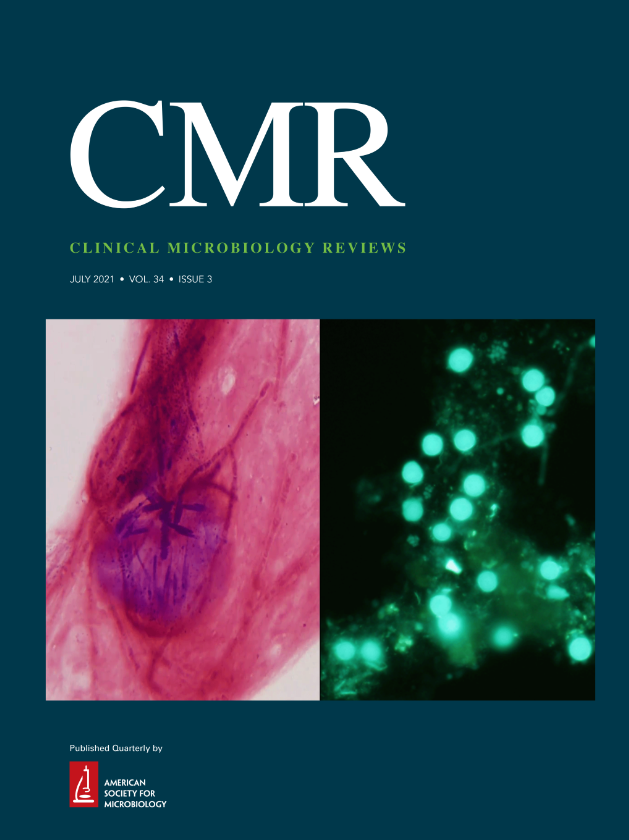Genetic diversity, biochemical properties, epidemiology, and detection methods of IMP- and VIM-type carbapenemases.
IF 19.3
1区 医学
Q1 MICROBIOLOGY
引用次数: 0
Abstract
SUMMARYMetallo-beta-lactamases are an ever-growing problem. Since the discovery of the beta-lactamase of Bacillus cereus in the late 1960s, many class B beta-lactamases have been reported, with three main families being NDM-, IMP-, and VIM-like. IMP- and VIM-like carbapenemases have been identified in a wide variety of Gram-negative bacteria. VIM-type carbapenemases are widely distributed, primarily represented by two main clusters, VIM-1 and VIM-2, and have been found in both Enterobacterales and non-fermenters. IMP-type carbapenemases are characterized by a significant genetic diversity and low identity between subgroups. This carbapenemase is more prevalent in Asia but has been identified globally, in both Enterobacterales and non-fermenters, as observed for VIM-type carbapenemases. The genetic diversity of IMP- and some VIM-type carbapenemases limits their detection. This review aims to discuss the genetic diversity, epidemiology, and biochemical characteristics of VIM- and IMP-type carbapenemases. It also evaluates the efficacy of commercially available detection tests and the in vitro activity of recently developed inhibitors.IMP型和vim型碳青霉烯酶的遗传多样性、生化特性、流行病学及检测方法。
金属-内酰胺酶是一个日益严重的问题。自20世纪60年代末蜡样芽孢杆菌的β -内酰胺酶被发现以来,已报道了许多B类β -内酰胺酶,主要有NDM-、IMP-和VIM-like三个家族。IMP-和vim样碳青霉烯酶已在多种革兰氏阴性菌中发现。vim型碳青霉烯酶分布广泛,主要以VIM-1和VIM-2两个主要簇为代表,在肠杆菌和非发酵菌中均有发现。imp型碳青霉烯酶具有显著的遗传多样性和亚群之间的低同一性。这种碳青霉烯酶在亚洲更为普遍,但在全球范围内已被发现,在肠杆菌和非发酵菌中都有发现,如在vim型碳青霉烯酶中观察到的那样。IMP-和一些vim型碳青霉烯酶的遗传多样性限制了它们的检测。本文综述了VIM型和imp型碳青霉烯酶的遗传多样性、流行病学和生化特性。它还评估了市售检测试验的功效和最近开发的抑制剂的体外活性。
本文章由计算机程序翻译,如有差异,请以英文原文为准。
求助全文
约1分钟内获得全文
求助全文
来源期刊

Clinical Microbiology Reviews
医学-微生物学
CiteScore
54.20
自引率
0.50%
发文量
38
期刊介绍:
Clinical Microbiology Reviews (CMR) is a journal that primarily focuses on clinical microbiology and immunology.It aims to provide readers with up-to-date information on the latest developments in these fields.CMR also presents the current state of knowledge in clinical microbiology and immunology.Additionally, the journal offers balanced and thought-provoking perspectives on controversial issues in these areas.
 求助内容:
求助内容: 应助结果提醒方式:
应助结果提醒方式:


